As In Heaven So On Earth, Hotel Poseidon, Killer Concept, The Found Footage Phenomenon, Ultrasound
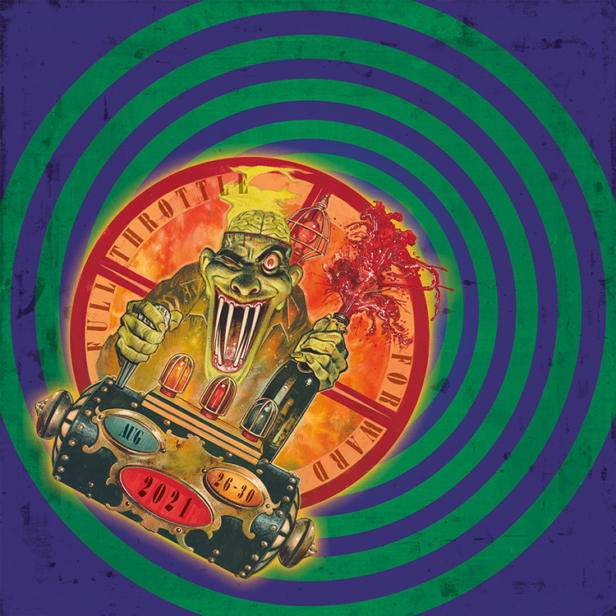
It’s my fifth and final day of FrightFest – for others who did the physical event, too, this will mark their tenth within two weeks. Frankly, it’s been a fantastic few days of beheadings, stabbings and numerous other ways to kill a person. And very consistent too! I say that as someone who didn’t even see The Sadness – which people on the forums rave about. I got to be honest, with these movies, plus the screeners I caught on the run-up, I’m thinking of putting on something a lot more cuddly afterwards. But first, we got five movies to catch first. I prepare some coffee just in time for…

KILLER CONCEPT
Directed by Glenn Payne
The beginning of the end – another small scale horror, from the director of Driven. True to its name, Killer Concept has a really cool premise: Mark, played by Glenn himself, is a shy serial killer who ends up doing photography for a movie about himself. Teaming up with him are Holly, who wants to make a serious film about a man who kills women, and Seth, who just wants to make a splatterfest. In this respect, it’s a meta look at artistic licence in true crime (is strangulation too boring), as well as a thriller about someone trying to hide their secret identity. The first part is done pretty well – though it’s to the film’s benefit that scenes which are conceptually funny, are played relatively straight. For example, in the hands of a goofier director, Mark listening to the others suggest the real-life killer is ugly, creepy or sleazy could have been cringe humour. Here, Payne somehow manages to work it into a narrative about him being unable to connect with others. The situation is inherently amusing, and if the characters acted like it, the film would lose its most exciting feature: how likeable Mark is. Yeah, he’s undoubtedly doing something wrong, and he’s got that toxic incel “I’m a nice guy” energy about him. Still, you also want to hug him and hope he can reconsider his actions.
As a horror, it is less successful, despite the leads’ best effort. All three work well, immediately establishing who they are and bringing such dynamic energy to their scenes. I enjoyed the characterisation throughout, and the story beats themselves are decent. However, there is rarely a sense of urgency to proceedings, with the primary source of tension revolving around whether or not Mark will kill someone we barely know. The dialogue-heavy, sometimes repetitive, second act starts to drag despite everyone’s best efforts. A few telegraphed clues aside, there are not enough moments where Mark can be found out – he’s pretty much in the clear for most of the running time. This isn’t to say I was ever bored, as there are some wonderful character moments throughout. Like surprise at Holly saying she doesn’t care about the feelings of the killer. I also laughed out loud at the bit where she noticed a pattern to his kills he’s until then utterly unaware of. There are apparent budget issues, most evident when we see the Tinder knock-off, though that’s fine aside from an anticlimactic ending. Judging by both this and Driven, I suspect even with a colossal budget, Payne would be drawn to this sort of intimate dark-comedy. Speaking of which, I’d say this was an improvement on Driven, and I look forward to seeing what he does next.
Rating: 




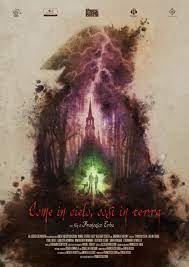
AS IN HEAVEN, SO ON EARTH
Directed by Francesco Erba.
One of my favourite things about FrightFest is how you can have two completely different films one after the other – both of which are cool, but for really different reasons. As In Heaven, So On Earth is a beautiful Italian film combining puppetry with found footage and, for good measure, more traditional filmmaking.Three techniques for three different eras. It’s ambitious, just like its sometimes meandering plot, which connects the disappearance of two teenagers in 2011, and the subsequent investigation, to the imprisonment of a young girl in 1275. It’s a cool idea that seems promising at first as we get layer upon layer of intrigue, making for a potentially intriguing mystery. However, I think it points opaqueness is equated with complexity, and I think this works against the story being told, which essentially charts abuses by religious organisations over the centuries. Moreover, with the plot being vague, then the threat itself is not well characterised either – taking the form of a man in long robes.
Some of the horror scenes failed to grab me – especially the found footage ones with the crudely sketched teens visiting the ruins, in which they make terrible decisions. The camera being nose-height for a dog makes exciting framing, and it’s fun to see its head bobbing up and down, but it also doesn’t give us the best angles for the action. The puppets are the definite highlight, and despite the lack of dialogue for their segments, I think they represent the most robust storytelling we see. The stop motion movements look incredible, and the artificial environments give Ebra a chance to show what he can create (though, to be fair, the catacombs in the modern plot look impressive too). Maybe it’s just that I’m not used to seeing this sort of animation – but I also felt far more connected to these characters than I did any of the rest. I suspect this will benefit from a rewatch, and perhaps the director didn’t have Sunday afternoon following a comedy in mind. But as much as this film impressed me, I don’t think it fully engaged me.
Rating: 





ULTRASOUND
Directed by Rob Schroeder
It’s a rainy night, and Glen’s car has just broken down. Handily there’s a nearby house, though not so handily the married couple in it is bizarre. Art is far older, and you could believe his wife, Cyndi, is his daughter (it isn’t that fucked up, but with him being her former English teacher, it’s still fairly fucked up). It only gets stranger from there – after a few minutes of speaking with him, the man, Art, discusses his depression in detail then offers him his wife. As this goes on, a woman is secretly dating a politician but knows he’s hiding something. And then there are a small team of people watching Glen and Cyndi, who also experiment with the mind-altering effects of ultrasound. To paraphrase one of them, it’ll all make sense as we go on. Or at least it sort of will. One of the enjoyable aspects of Ultrasound is the characters can’t even trust themselves, so how can the audience? I don’t want to say too much, though if there’s one central theme then it’s control. That is control over others and, arguably even more intriguing, control over oneself.
This movie does well by dropping in little details here and there, which seem out of place, then bringing them up again in an ‘of course’ way. It’s a mystery box waiting to be cracked open – and what’s really impressive is it never cheats. Someone could figure it all out during the first half – it’s just improbable they will. Credit to scribe Conor Stechschulte, who based the script on his own graphic novel, he repeatedly finds ways of tripping up the audience. And even when the story becomes less interesting, it’s never predictable. However, the longer Ultrasound goes on, the more the focus seems misplaced – downplaying the most intriguing source of tension in favour of another far less interesting one. Character motivations also don’t gel either, making the final conflict seem lower stakes than it should and far less personal. What answers we get leave further questions, and I don’t think the finale is an effective way of tying things up (though if audiences respond to this, it sets up a potentially very cool sequel).
Rating: 





THE FOUND FOOTAGE PHENOMENON
Directed by Sarah Appleton and Phillip Escott.
Love ‘em or hate ‘em – found footage films are like zombies: even when you think they’re dead, they find a way of coming back. And in huge numbers! These movies have been among the biggest (and, importantly, most profitable) in the last few decades, so it’s about time someone made a documentary. In a sense, it’s tricky – aside from being relatively young, it’s a narrative style rather than a subgenre – but something that’s been there from the start (arguably Peeping Tom) is a blending between reality and fiction. From these beginnings, we track the style of filmmaking through Cannibal Holocaust, discussing the significance of the Vietnam war and the use of authentic animal cruelty to sell human kills. Then there are lesser known trailblazers, such as The McPherson Tapes, before we reach Blair Witch, Paranormal Activity, and even the current era. To talk about them are some excellent guests: the makers of Host, Creep, Ghostwatch, Death of a Vlogger, Trollhunter, The Last Broadcast, Afflicted, Jeruzalem, The Borderlands, among many others. We also see clips from some of the best movies of this kind – big and small alike.
How much one gets out of The Found Footage Phenomenon obviously depends upon how much they love, or can tolerate, found footage films. While the documentary is satisfying to watch, the anecdotes soon get repetitive, and there isn’t enough analytical depth to appeal to naysayers. Yeah, there are some interesting titbits: I never connected found footage and classic epistolary literature such as Dracula or Frankenstein etc. But for most of its running time, it’s brief chats with talking heads as they reflect on their movies and how useful they found the way of shooting. For me, I was okay with this unambitious approach: I’ve seen and enjoyed many of these movies, so I was more than happy to spend time with the people who made them. They’re also contagiously enthusiastic, and just seeing so much talent in one movie made it feel like a cinematic treat. Good creatives, good footage and good subject matter. Oh, and kudos for a fantastic closing gag.
Rating: 




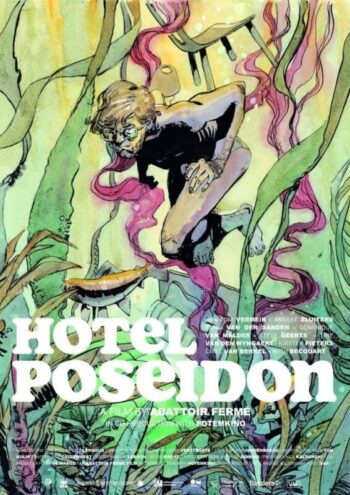
HOTEL POSEIDON
Directed by Stef Lernus
Not the sort of place you’ll see recommended on trip advisor. The titular hotel is horrific: a truly disgusting mix of fungus, dilapidation and faded glory. Serious respect to the set designers: it takes a lot of skill to make a place that looks ths run-down. That’s phenomenal attention to detail, and every last surface, wall or item from the kitchen looks ugly. It really transports viewers into what I can only hope is a world unlike their own. And then there’s the owner, Dave, who inherited it. Docile, bored and unclean, he walks the halls like a zombie adding to his mounds of cigarette butts and eating whatever the hell from his fridge. Watching him slowly going about his business is excruciating. He’s neglected himself as much as the building, to the extent he hasn’t even noticed his Aunt is dead. In contrast to Dave, the guests are mostly caricatures, with a slight Roald Dahl quality about them – caked in makeup and muttering obscenities. My favourite is probably the very talky barmaid, but his terrible mum is effective too. The exception is Nora who, due to unfortunate circumstances, is caught in this carnival of the grotesque. She’s the closest we get to a real person in this heck hole, and needs a room of potplants to counter its stench.
There isn’t much of a plot to this film. Aside from a throughline of one of the guests planning a party that’ll incude music, drinks and an autopsy, it watches more like an episodic exploration of physical and spiritual decay. In the beginning, a voice from the room next to Dave’s tells him to do something new on the way “towards something fresh”. But that won’t happen – he’s in a state of learned helplessness. Hotels are typically somewhere you stop off on a journey – he’s going nowhere, though. Despite the dark subject matter, there’s much humour to it – scenes like him discussing the options for his probably recently deceased aunt are a mix of surrealism and awkwardness. The dialogue is often stilted, full of non-sequiturs or weird details, such as his stepfather telling him about the time he caught his own parents at it. Lernus is also a fantastic stylist, creating an uncanny atmosphere that’s purgatorial. The party sequence, which dominates the second half, is a wonderful showcase of strangeness: Lynch without the fleeting beauty. There’s no redemption here, and though I’m normally a stickler for a good arc, I like that we don’t come away thinking Dave’s life can be any better. He may have a moment of connection, but Nora has a place to go. Whereas for him, the madness is another ordinary day – there’s only more to come. This brings me to the running time – at a short 90 minutes, you’ll be keen to leave by the end. Not because it’s ever bad, but because it’s just hard to stay – there’s only so much you can take, and as the industrial cabaret score reaches its crescendo, I knew it was time to checkout. However, I’ll remember my stay for a long time yet.
Rating: 







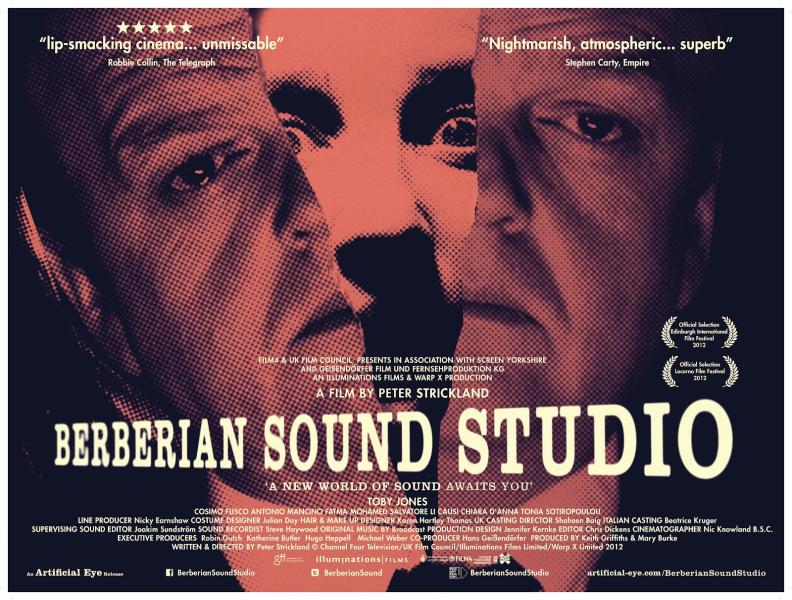
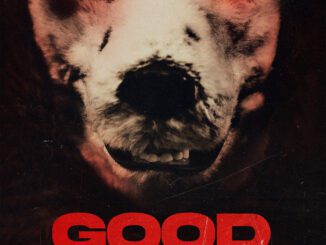
Be the first to comment